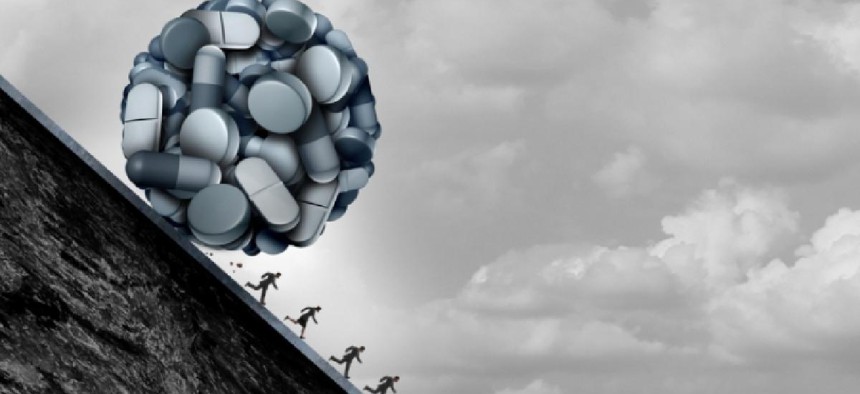Health Care
All hands needed on deck to turn the tide against the opioid crisis

Image: Lightspring from Shutterstock
What do the leafy suburbs of Philadelphia have in common with the mountains of West Virginia, the former mill towns of southern New Hampshire and the banks of the Tennessee River?
They are all, like so many other corners of America, struggling with our nation’s crisis of opioid addiction and overdose. We’ve visited each of these places as part of a national listening tour, to understand how local communities and leaders are responding to the opioids challenge we face.
Our most recent stop was outside Philadelphia, at Media’s Mirmont Treatment Center, one of the state’s largest substance abuse treatment facilities. We were there to meet with the center’s employees, community members, faith leaders, and first responders who have been inspired, sometimes by tragedies or addictions close to home, to engage on this crisis.
Pennsylvania has been hit hard by opioid addiction. More than 3,000 Pennsylvanians had their lives cut short by a drug overdose in 2015, up 20 percent from the year before.
These are not just statistics; they are our families, our friends, our neighbors. One of the people we heard from there is a successful real estate developer who lost his 28-year-old son to an overdose and has now become committed to helping others avoid the same tragedy. One first responder we met handled 150 drug overdose calls in 2016 – nearly one every other day.
President Trump and his administration believe that heroes like these Pennsylvanians, those on the front lines, are going to turn the tide against this crisis.
That perspective informs the work of President’s Commission on Combating Drug Addiction and the Opioid Crisis, which President Trump formed within months of taking office, and the work of cabinet departments such as the Department of Health and Human Services.
At a gathering of substance abuse advocates and activists from across the country in April, HHS unveiled a new strategy for fighting this crisis, focused on the unique capabilities the federal government can bring to the fight. It has five pillars: improving access to prevention, treatment, and recovery services like those provided by Mirmont; targeting the availability and distribution of life-saving overdose-reversing drugs; strengthening our understanding of the epidemic through better data; supporting cutting-edge research into pain and addiction; and advancing the practice of pain management to give Americans with physical pain a better option than opioids.
We are moving full steam ahead to advance this strategy every day, in conjunction with work in other parts of the Trump Administration and our state and local partners. On September 15, HHS announced $144 million in grants to 58 different entities across the country, focused on helping them to respond to the crisis in their own communities. Just the day before that, HHS disbursed more than $200 million in grants to community health centers for substance abuse and mental health treatment and prevention, including 32 health centers in Pennsylvania. All told, HHS will provide more than $800 million in funding to fight the opioid crisis this year, and more will come from across the Trump Administration.
Facing persistently high rates of opioid addiction, the growing challenge of very potent, synthetic opioids like fentanyl and carfentanil, and rising rates of overdoses in most places, it is easy to get discouraged by the scale of this challenge.
But then you meet a mother who has lost a child to overdose, a young person who is now on the road to recovery, a first responder who has revived the same neighbor from multiple overdoses, or a doctor who has treated dozens of babies born physically dependent on opioids. You remember why we’re fighting, and why we have to win.
Our boss, President Trump, had many of those conversations as he traveled the country over the last couple of years. It has fueled in him a deep passion for and commitment to fighting the scourge of addiction.
This is an administration-wide effort to reduce the demand for drugs through treatment, awareness, and outreach and to aggressively interrupt the supply channels in the drug trade, both abroad and at home. By talking openly and honestly about this crisis, we hope to remove the stigma associated with asking for help, and to increase collaboration and communication in battling a scourge that literally knows no bounds. This is not someone else’s child, someone else’s co-worker, someone else’s challenge. No state has been spared; no demographic or geographic group is untouched. The President is leading the way, and urging each of us to do our part – because the opioid epidemic is everybody’s business.
Tom Price is the US Secretary of Health and Human Services; Kellyanne Conway is the counselor to President Donald Trump.
